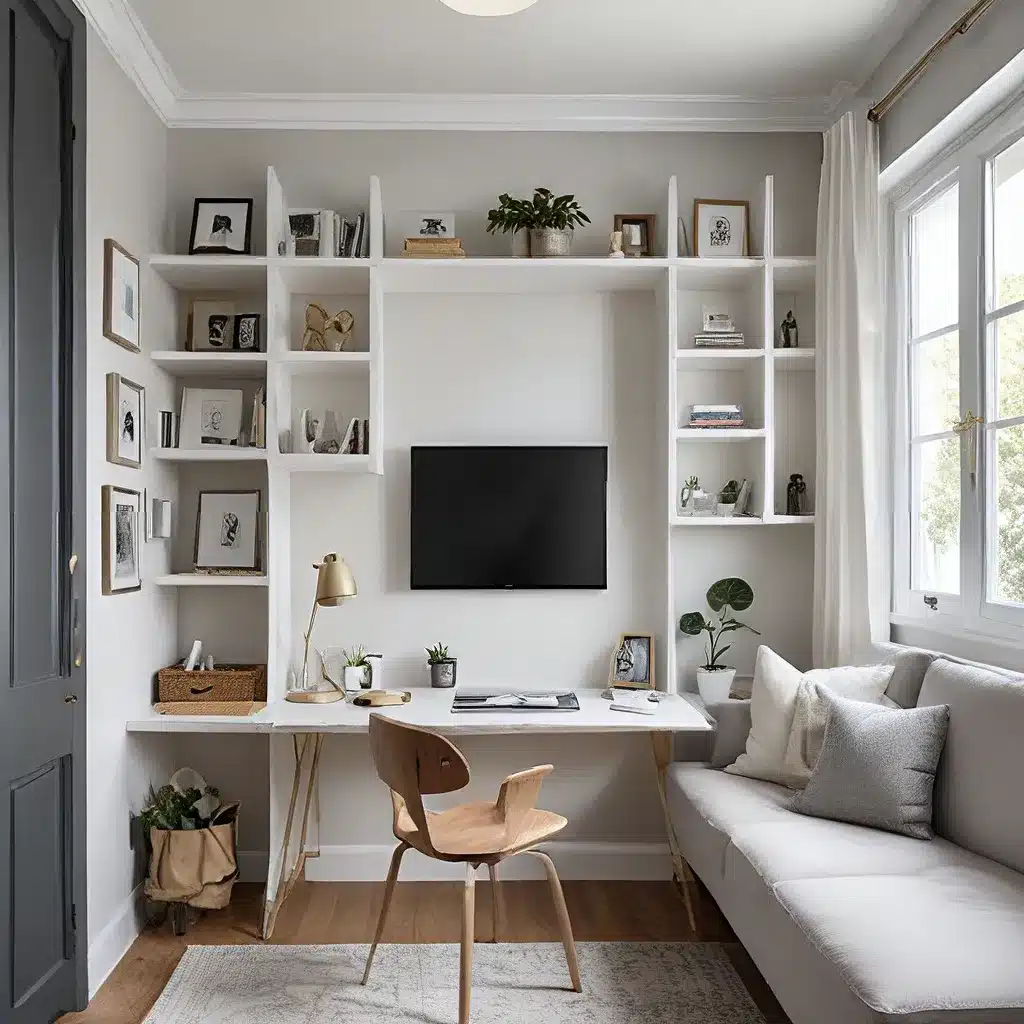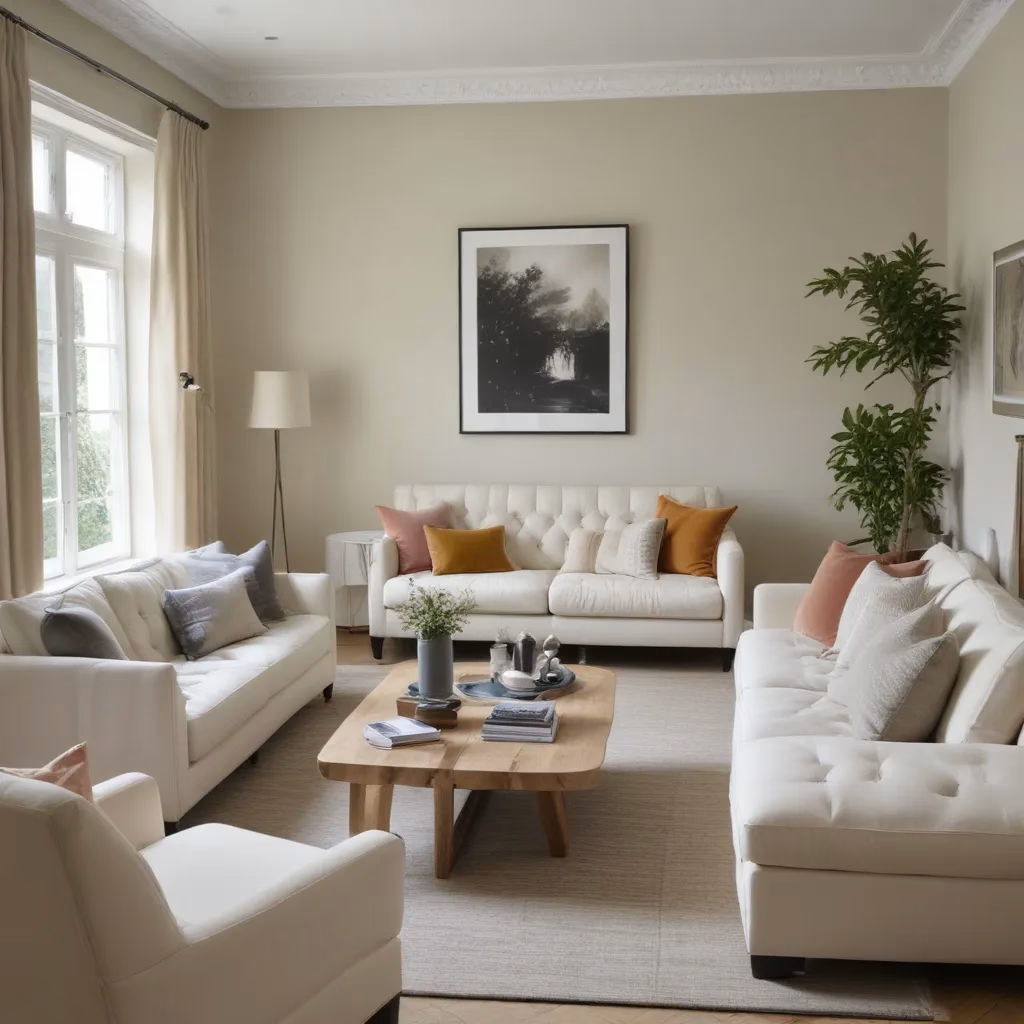
As someone who’s lived in a series of cozy (read: tiny) apartments over the years, I know the struggle of trying to make a small space feel more open and airy. It can be downright maddening when you’ve got limited square footage but a big vision for your dream home. But fear not, my fellow space-challenged friends – I’m here to share some insider secrets that the design pros use to create the illusion of grandeur in even the most compact of quarters.
Embrace the Power of Mirrors
Mirrors are the MVPs of small space design. They have the magical ability to reflect light and create the perception of depth, making a room feel instantly more spacious. Strategically placing mirrors across from windows or opposite each other can amplify that effect even further.
But mirrors aren’t just functional – they can also be a stylish decor element. Frame them with bold, oversized moldings to draw the eye upwards and create a sense of grandeur. Or cluster a grouping of smaller mirrors together for a gallery wall that adds visual interest.
Streamline with Multipurpose Furniture
When square footage is limited, every inch counts. That’s why multipurpose furniture is a small space dweller’s best friend. Think ottomans with hidden storage, coffee tables with built-in shelves, or sofas with chaise lounges that double as extra seating.
The key is to choose pieces that serve multiple functions without sacrificing style. Sofa Spectacular has some great options that are both practical and aesthetically pleasing, like their modular sectionals that can be rearranged to suit your needs.
Maximize Vertical Space
Too often, we get stuck thinking about a room’s dimensions in only two directions – width and depth. But the vertical dimension is where the real magic happens when you’re trying to visually expand a small space.
Tall bookcases, floor-to-ceiling curtains, and statement light fixtures that draw the eye upwards can create the illusion of greater height and volume. Even something as simple as hanging your artwork and shelving a bit higher than usual can make a room feel more spacious.
Embrace Lighter Hues
The color palette you choose can also have a big impact on how spacious a room feels. Light, airy colors like whites, pastels, and soft neutrals have an inherent ability to visually expand a space. They reflect light more than darker shades, creating a sense of openness and airiness.
In contrast, bold, saturated colors can feel a bit more visually heavy and “close in” a room. So if you’re working with a compact area, stick to a light and bright color scheme for maximum airiness.
Incorporate Strategically Placed Storage
Let’s be real – when you’ve got a small home, clutter is the enemy. Every item you bring into the space needs to have a designated storage spot. That’s where strategic storage solutions come into play.
Opt for sleek, minimalist storage pieces that don’t visually overwhelm the room. Built-in cabinetry, floating shelves, and under-bed storage containers can all help you keep things tidy and organized without making the space feel cramped.
Play with Scale and Proportions
When it comes to small spaces, it’s all about visual trickery. And one of the best ways to create the illusion of grandeur is by playing with scale and proportions.
For example, hanging a large, statement light fixture in a petite room can make the ceiling appear higher. Placing oversized artwork or a grand, floor-to-ceiling mirror on a wall can also give the impression of a more expansive space.
Conversely, choosing smaller-scale furniture and decor pieces can prevent a room from feeling too crowded and cluttered. It’s all about finding that perfect balance to maximize the visual impact.
Let in the Light
Natural light is the ultimate ally when you’re trying to make a small space feel more open and airy. Large windows, sheer curtains, and strategically placed lighting can all work together to flood a room with illumination.
And don’t forget about the power of reflective surfaces to amplify that natural light even further. Glossy tabletops, metallic accents, and mirrored elements can bounce the light around, making the space feel brighter and more expansive.
Embrace Minimalism
At the end of the day, less is often more when it comes to decorating a small space. Embracing a minimalist aesthetic can help you avoid visual clutter and keep the focus on the illusion of grandeur.
Stick to a curated collection of thoughtfully chosen pieces, and don’t be afraid to leave negative space around them. This creates a sense of openness and airiness that can make even the tiniest of rooms feel larger than life.
Conclusion
So there you have it, my friends – a toolbox of design tricks to help you visually expand even the most diminutive of spaces. By embracing mirrors, multipurpose furniture, vertical space, and a light, airy color palette, you can create the illusion of grandeur that’ll have your guests questioning the actual square footage.
And remember, the key to small space design is all about strategic thinking and a bit of visual trickery. So get creative, have fun, and enjoy the process of transforming your cozy abode into a spacious oasis.
Happy designing!



